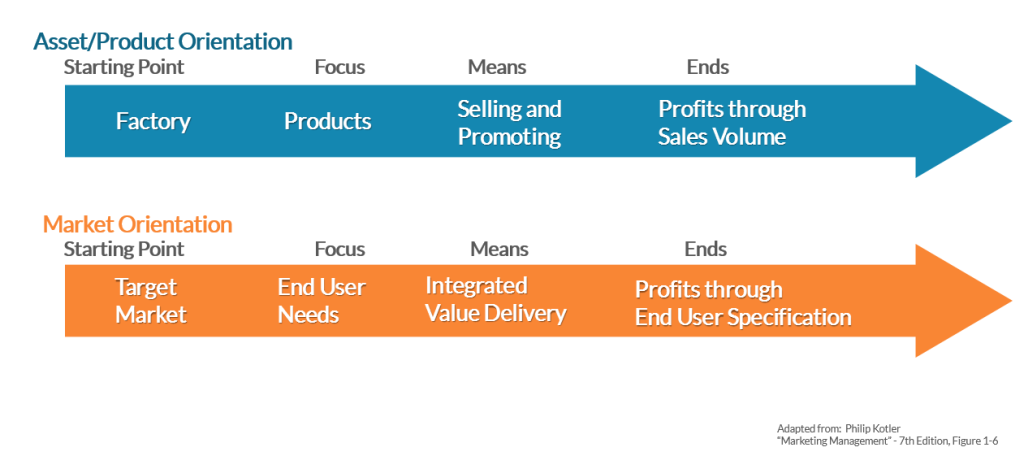Market Orientation vs. Asset Orientation
Drive end user exploration
An end user-driven business thinks and acts differently from an asset-driven business. A business with an asset, or product, orientation starts with the factory and focuses on the products. The means are selling and promoting, with the end result profit being measured through sales volumes. By contrast, a business with an end user, or market, orientation starts with the target market and focuses on the end user needs. They achieve profits through end user specification, via integrated value delivery.
Looking at the downstream end user to uncover new value means certain shifts have already taken place—such as shifting from an asset-driven mindset to a market-driven mindset. This doesn’t mean that you shuttered all production. Rather, it means that product development is based on intelligence from the market. Sometimes, the best opportunity to add value requires a new business model—a new way to go to market and possibly target a new set of customers.
Does your business have a market-driven orientation or an asset-driven orientation?
Build Brand Preference
To decide what action to take, you need facts. That's what data analysis gets you.






